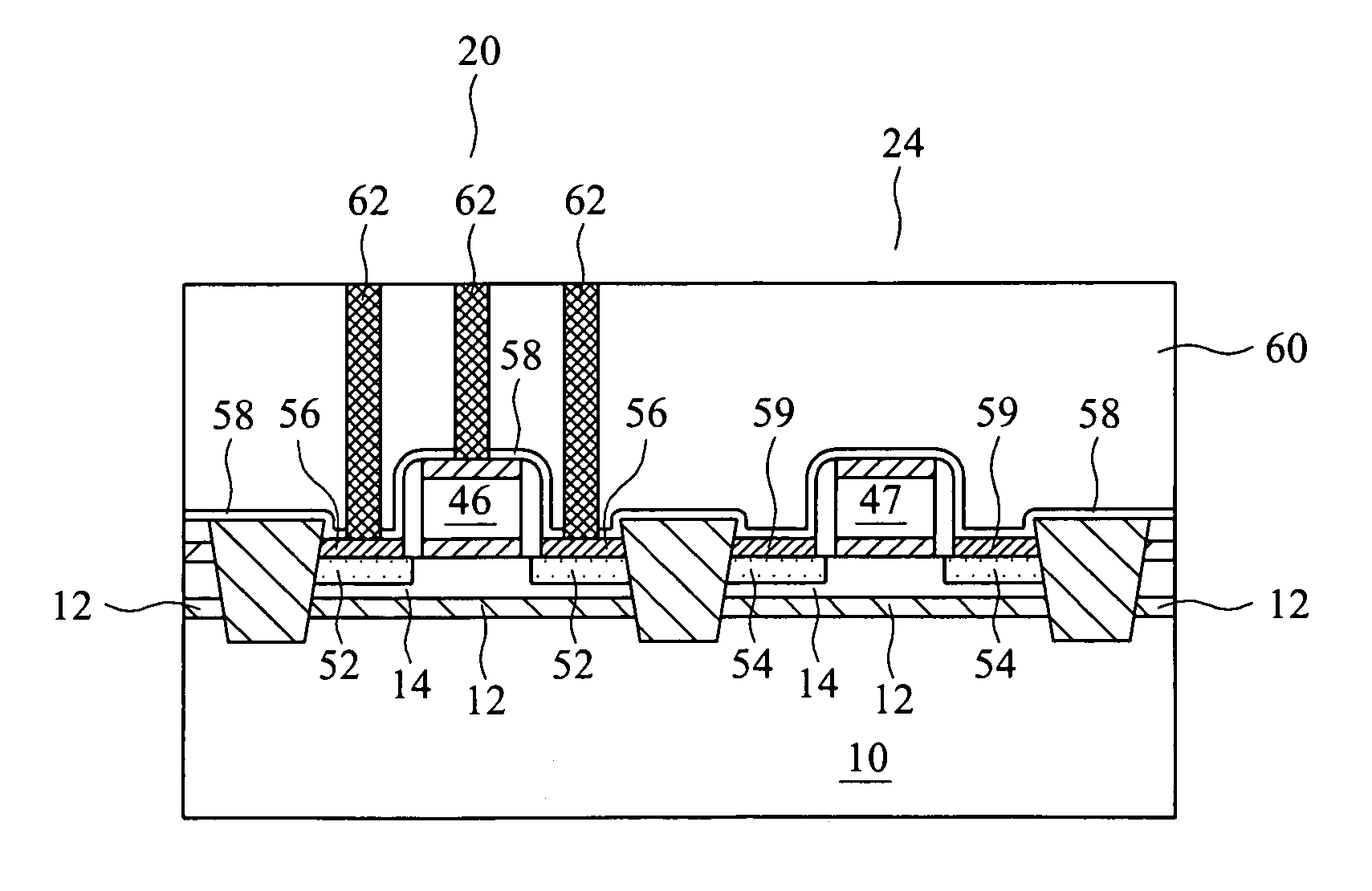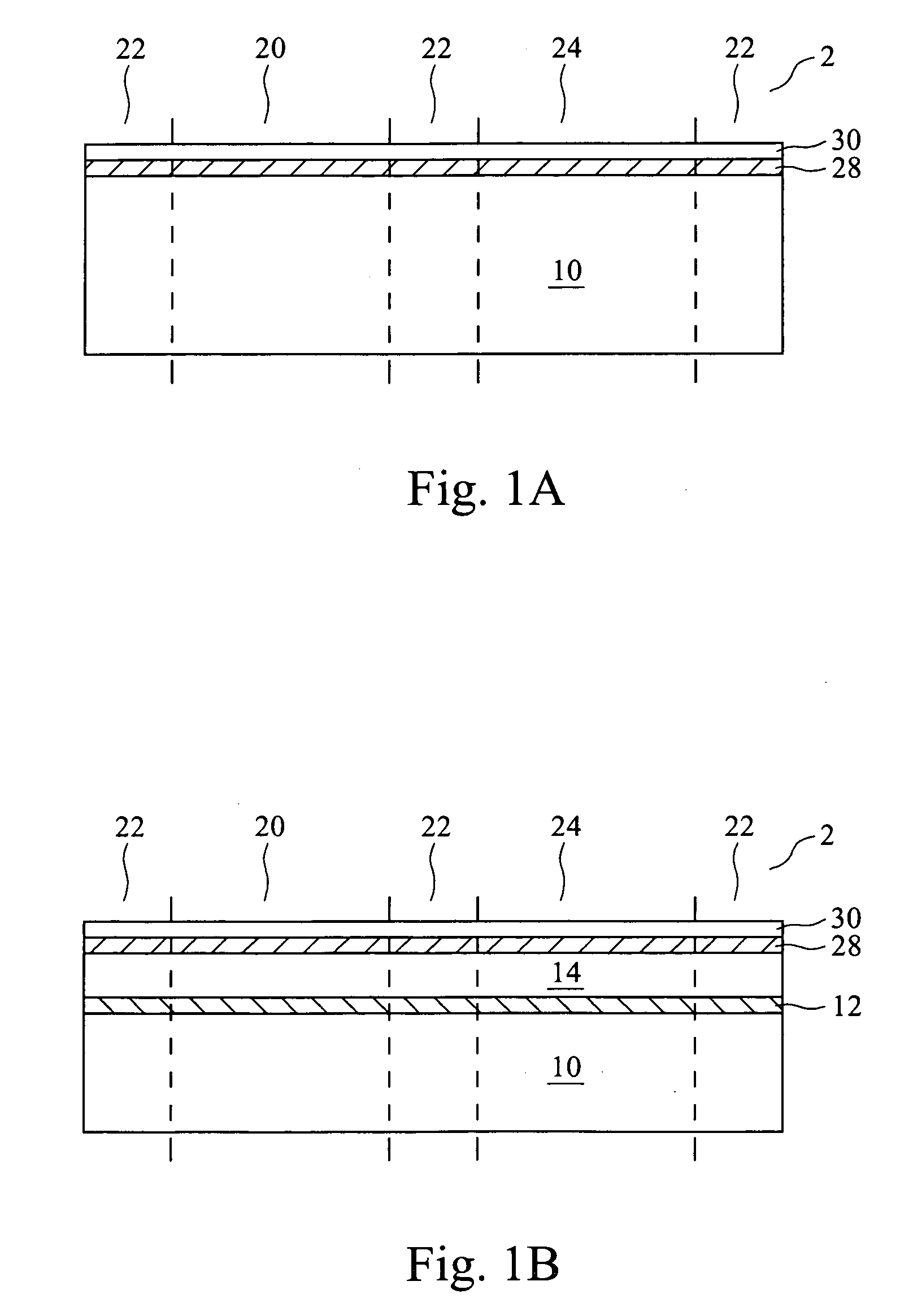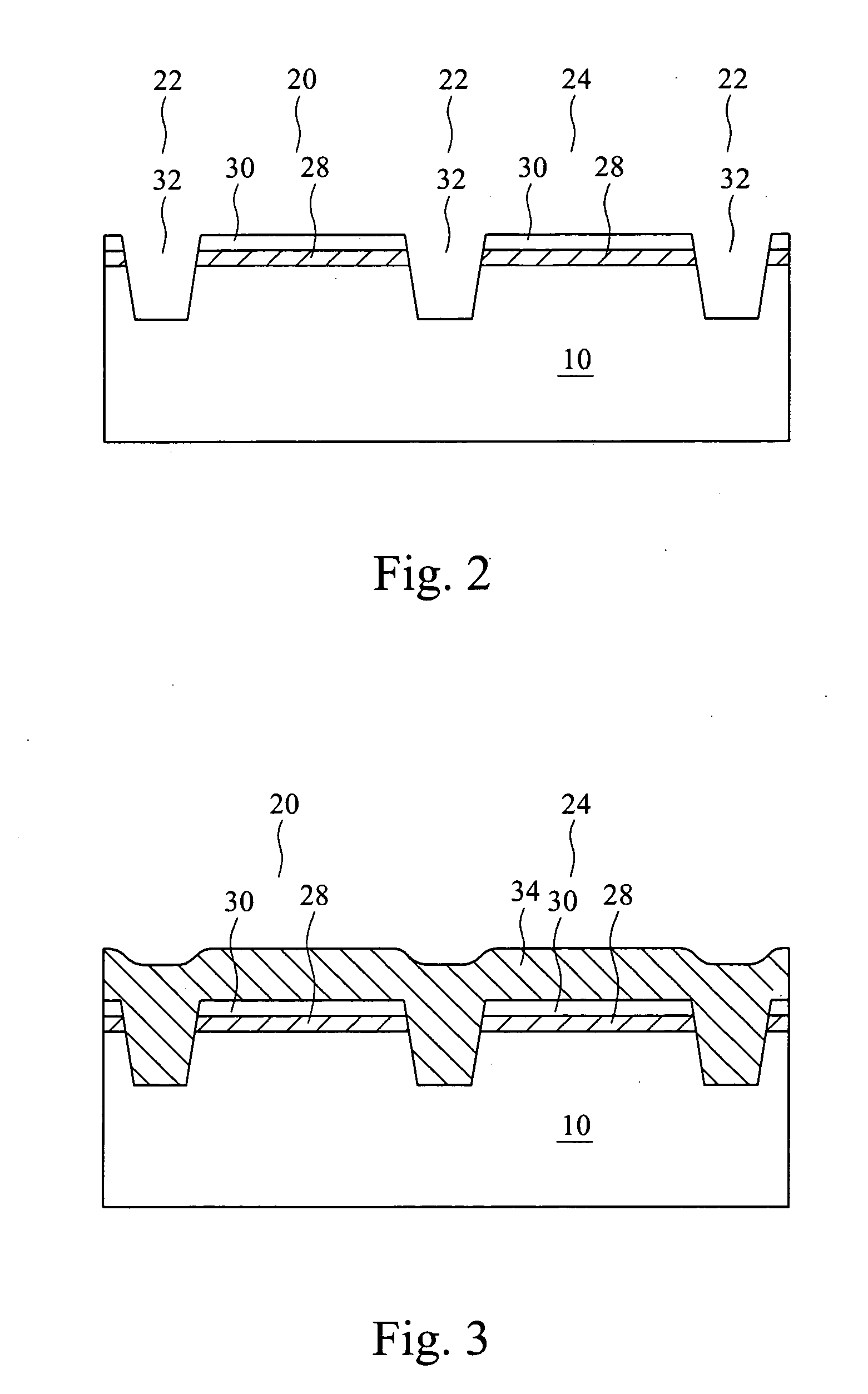Pattern loading effect reduction for selective epitaxial growth
a technology of epitaxial growth and pattern loading, which is applied in the direction of basic electric elements, electrical equipment, semiconductor devices, etc., can solve the problems of reducing the uniformity of pattern sizes, affecting the development of seg processes, and affecting the uniformity of pattern thickness, so as to reduce the pattern loading effect , the pattern density is more uniform and the pattern loading effect is reduced
- Summary
- Abstract
- Description
- Claims
- Application Information
AI Technical Summary
Benefits of technology
Problems solved by technology
Method used
Image
Examples
Embodiment Construction
[0012] The making and using of the presently preferred embodiments are discussed in detail below. It should be appreciated, however, that the present invention provides many applicable inventive concepts that can be embodied in a wide variety of specific contexts. The specific embodiments discussed are merely illustrative of specific ways to make and use the invention, and do not limit the scope of the invention.
[0013] The cross sectional views of the intermediate stages in the manufacture of preferred embodiments are illustrated in FIGS. 1A through 9B, wherein like reference numbers are used to designate like elements throughout the various views and illustrative embodiments of the present invention. The preferred embodiments of the present invention use the selective growth of source / drain regions as an example. One skilled on the art will realize that the method discussed applies to selective epitaxial growth of other crystal components in integrated circuits as well.
[0014]FIGS...
PUM
 Login to View More
Login to View More Abstract
Description
Claims
Application Information
 Login to View More
Login to View More - R&D
- Intellectual Property
- Life Sciences
- Materials
- Tech Scout
- Unparalleled Data Quality
- Higher Quality Content
- 60% Fewer Hallucinations
Browse by: Latest US Patents, China's latest patents, Technical Efficacy Thesaurus, Application Domain, Technology Topic, Popular Technical Reports.
© 2025 PatSnap. All rights reserved.Legal|Privacy policy|Modern Slavery Act Transparency Statement|Sitemap|About US| Contact US: help@patsnap.com



